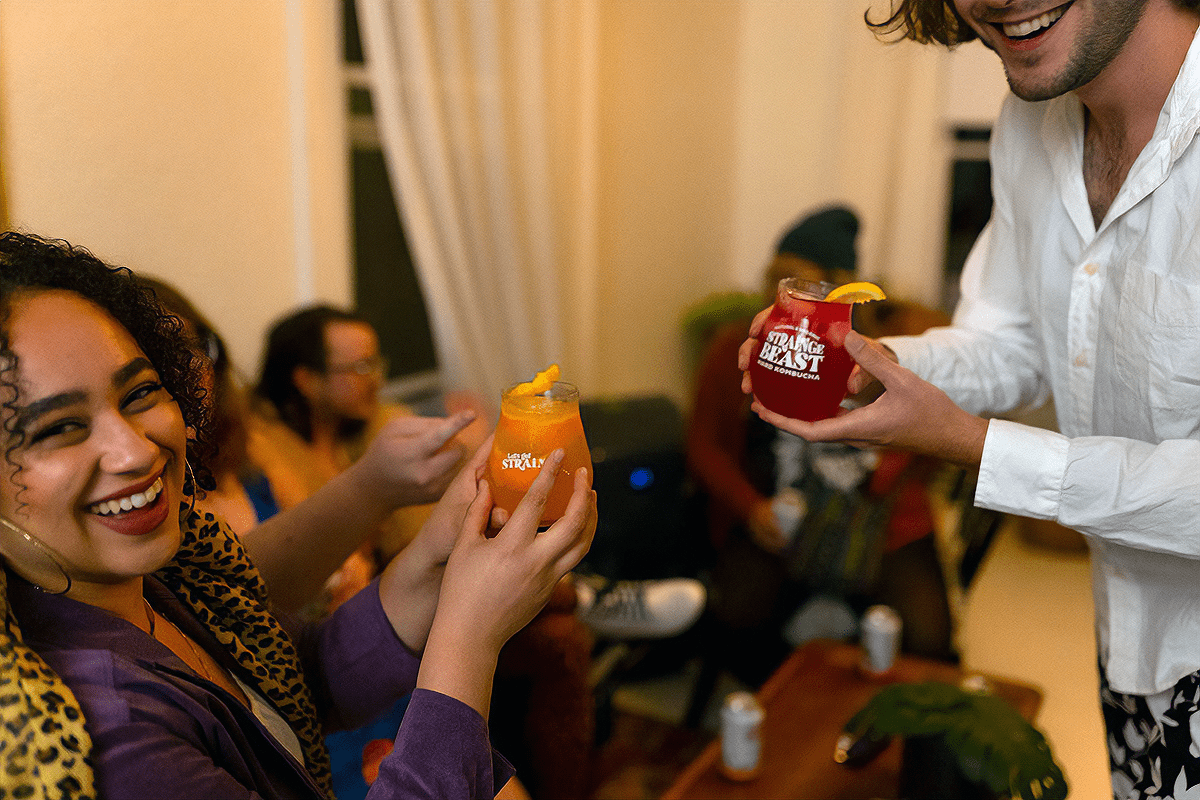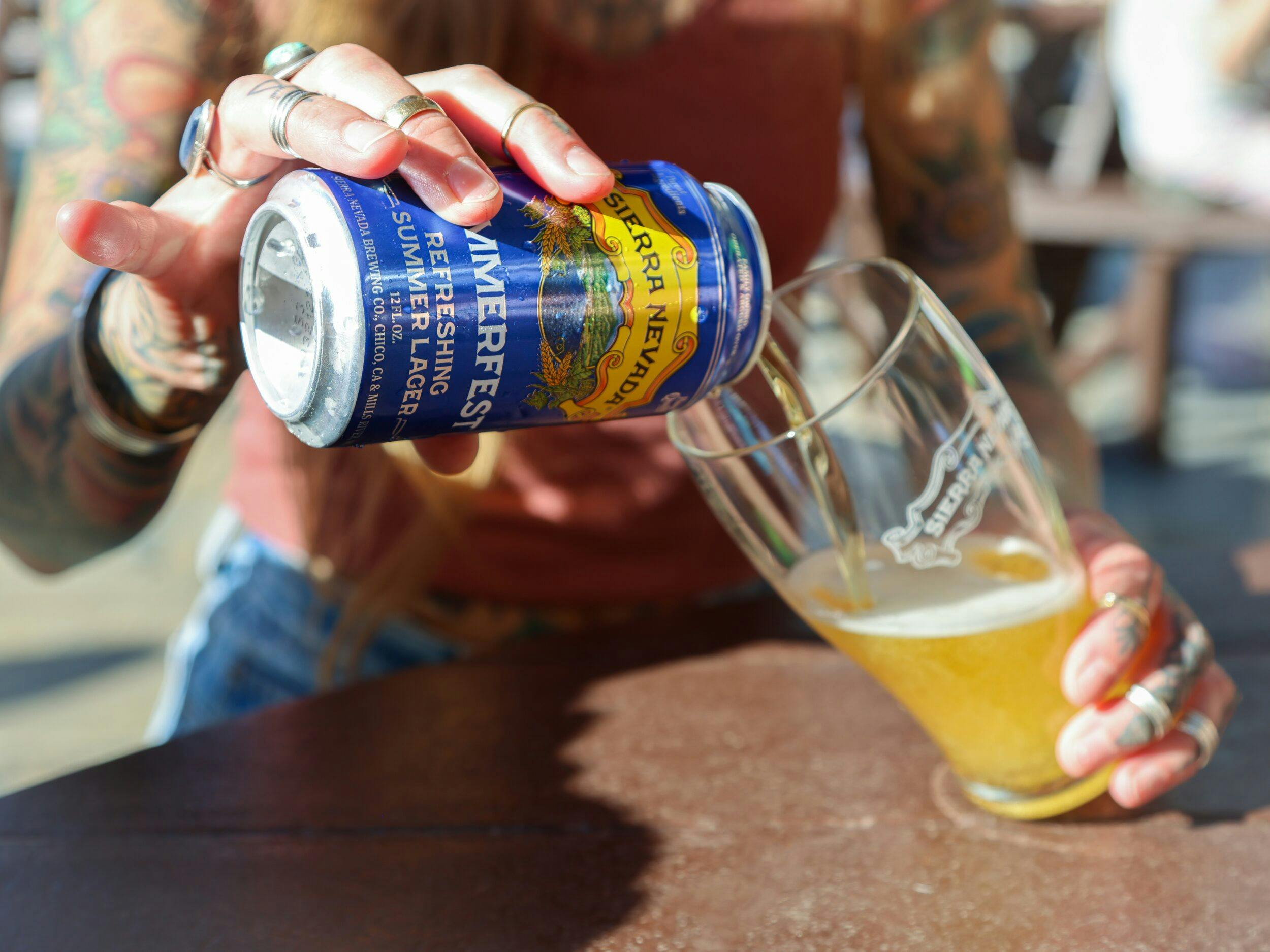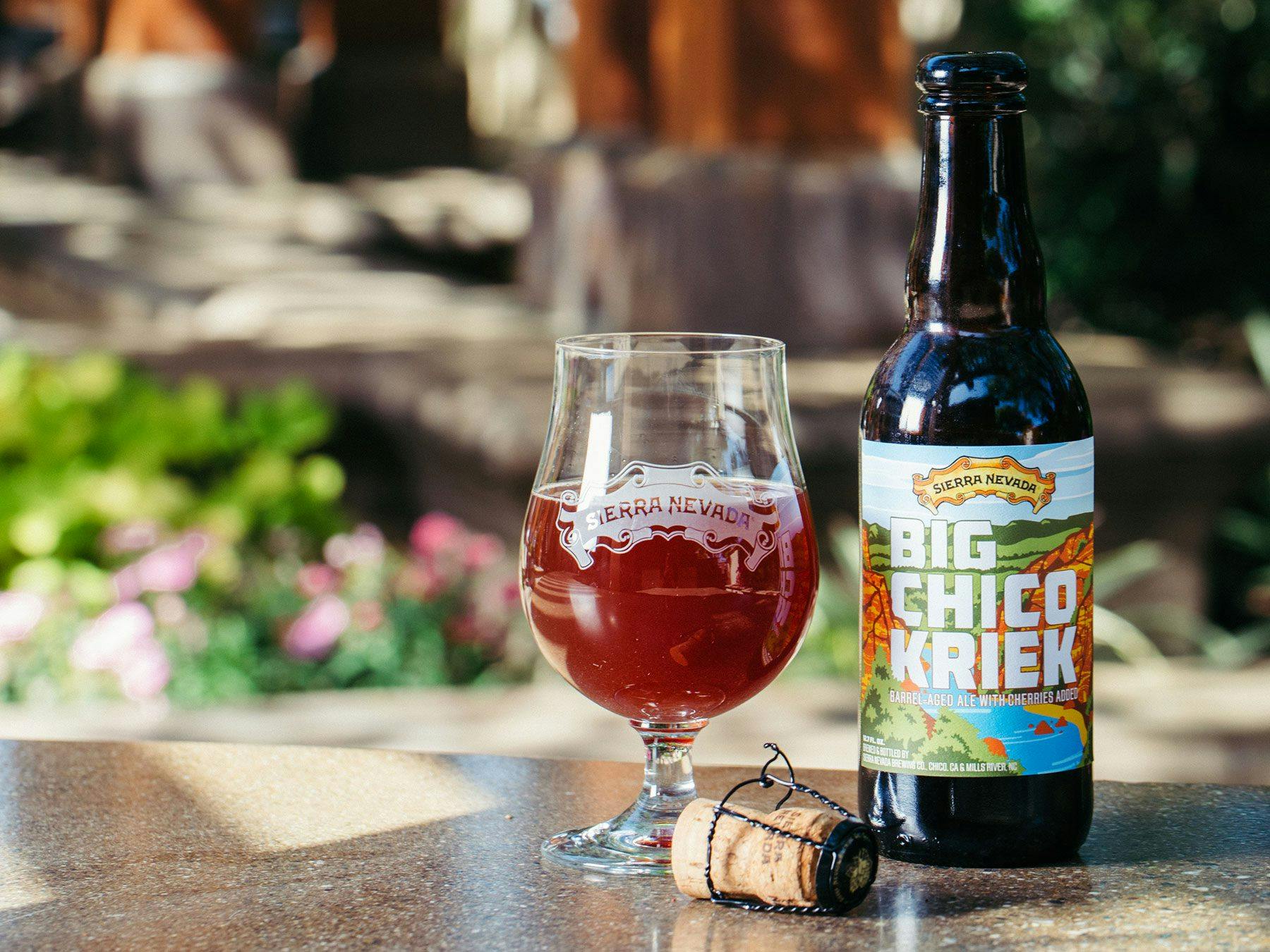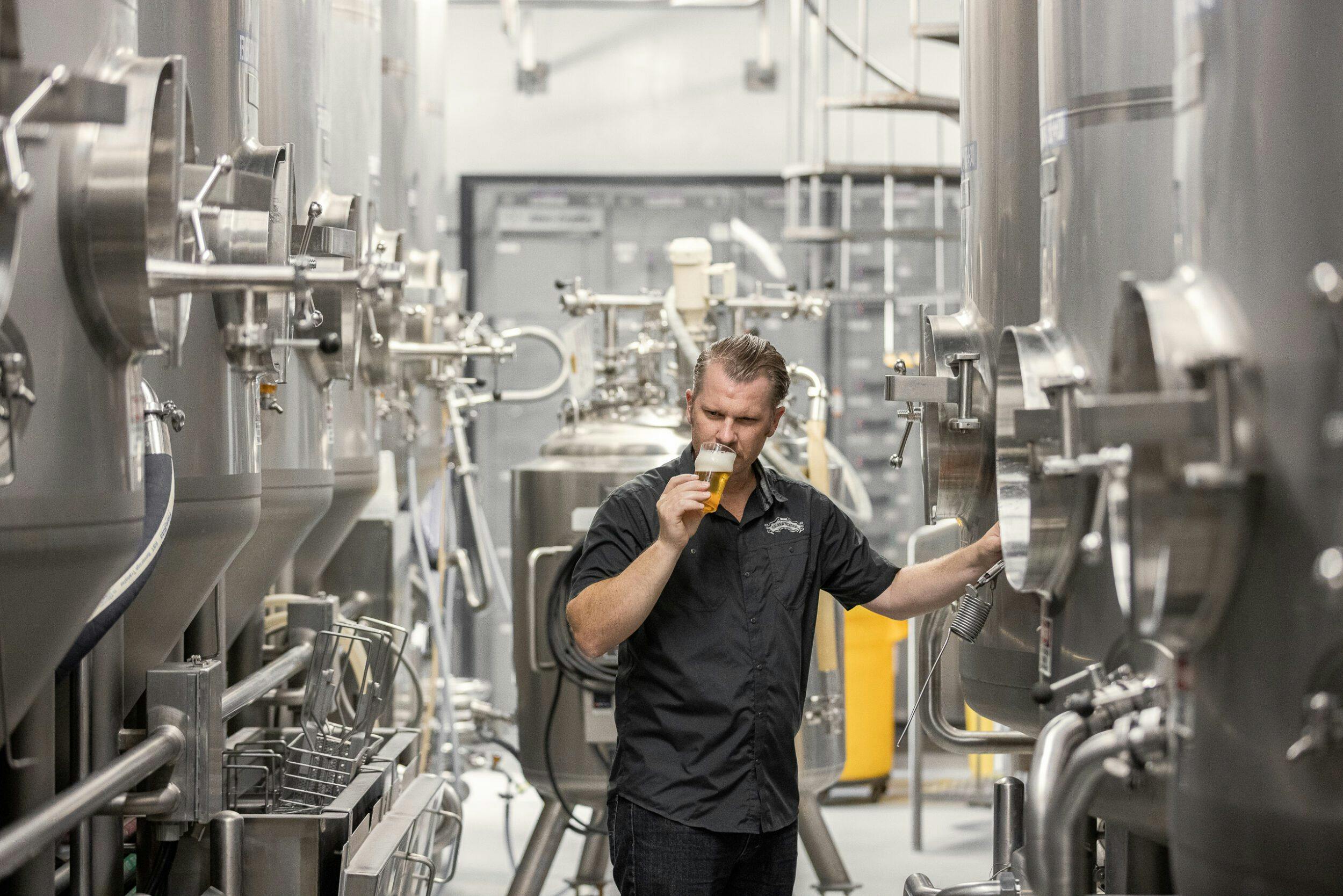How to Make Hard Kombucha?
Some weekends are about pure relaxation; you’re hangin’ with friends, trying not to lift a finger — but maybe lifting cans of Strainge Beast. Then other times you wanna do something, have a project or goal that engages your brain, or your taste buds, in a different way. Might be time to learn how to make hard kombucha!
Brewing your own DIY hard kombucha is probably easier than you think. At a super basic level, you’re brewing tea, fermenting it, and topping it off with your own design of fruits and spices. Just be patient — it takes a few days — and let the wild science of hard kombucha do its thing.
You’re ready, we know it. Check out the step-by-step recipe below, created by our Strainge Beast brewers, which nets you approximately one gallon of hard kombucha. Maybe this unlocks your new hobby. Or maybe it’s a one-off experiment. Hey, you’ll have a rad story to tell while you drink Ginger, Lemon & Hibiscus.
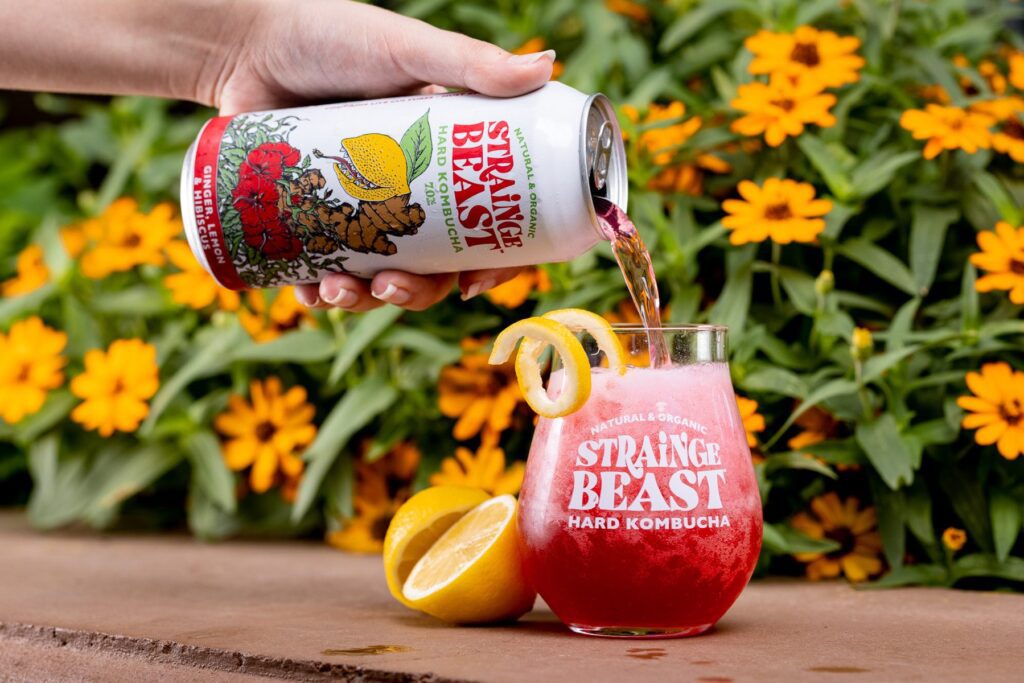
Brewing Alcoholic Kombucha: The Basics
How long does it take to brew hard kombucha?
The hands-on time for brewing hard kombucha isn’t crazy; steps like making tea and adding SCOBY — when you’re actively involved — are easygoing. But the natural processes of fermentation and carbonation, which you just have to let happen, take a while. From start to finish, you’re looking at ballpark 3 weeks until you have drinkable hard kombucha.
What makes the hard kombucha boozy?
Regular kombucha only takes one round of fermentation, and the final product contains just a hint of alcohol (0.2%–0.5%). Strainge Beast flavors (and the booch you’re about to brew!) become hard kombucha through a second round of fermentation. A fresh dose of sugar and yeast generates alcohol, making your tart-and-sweet kombucha even more tantalizing.
What ingredients will we need? (What type of yeast?)
There’s not much shopping necessary before you can start brewing. (“Shop” your pantry, too; you might have some tasty flavors already.) Here’s a quick checklist:
- 1 3/4 cup organic pure cane sugar
- 8–9 organic black tea bags
- 1 gallon + 1 cup filtered water (reverse osmosis or spring/distilled water)
- One (1) SCOBY (Symbiotic Culture of Bacteria & Yeast). You can find these online, sometimes at your local natural food store, or get one from a friend who already makes kombucha.
- Yeast packet. Champagne or distilling yeasts work best, and you can find them online or at your local homebrew shop.
- Fruit juice, herbs, and spices you want to use toward flavoring. Our Strainge Beast flavors can kickstart your ideas.
What should you brew the kombucha in?
You’ll want a larger vessel for your two main rounds of fermentation, and a big mason jar or multi-gallon homebrew jug will do the trick. Once you’re close to the finish line, you’ll pour your creation into something smaller like swing-top bottles.
While it’s optional, consider using airlocks to take your quality control to the next level. These simultaneously block oxygen and let CO2 escape — essential for the final fermentation — and you can find them online and at homebrew shops.
What is the anticipated ABV?
Our recipe uses 1 cup of sugar for second fermentation, and based on what we know about champagne and distilling yeasts, you should end up with roughly 5–6% ABV in your DIY hard kombucha.
Got everything? (Including a motivational can of Strainge Beast?) OK, roll up your sleeves and let’s do this!

Step 1: Make the base tea
Heat your water and steep the tea bags for the package’s recommended length of time. Stir in about 3/4 cup (7 ounces) of sugar, making sure it’s dissolved completely. Cover your sweet tea and let it cool to room temperature.
Step 2: Launch fermentation #1 with SCOBY
Once cool, pour the tea into your fermenter (that’s your big mason jar) leaving room for your SCOBY. Add in the SCOBY and the starter culture that it came in, then cover your fermenter with a breathable top that will keep out any contaminants but still lets air flow through — think cheesecloth, an old cotton shirt (a clean one!), or whatever you can find.
Leave the fermenter on your counter or in a closet for about 10 days, then taste it to see if the flavor is to your liking. If you want a little more tart acidity, leave it another day or two.
Step 3: Start fermentation #2
At this point, you have regular kombucha, which you could drink as is — add some flavors and call it good. But let’s bring in the booze for hard kombucha. First, you should take out your SCOBY and put it in a plastic container or another jar, and use just enough liquid from the kombucha to fully cover the SCOBY. You can use this in your next batch!
Now, in a separate container, dissolve 1 cup (4.5 ounces) of sugar in 1 cup of warmed water and add the yeast, allowing the mixture to hydrate, just like making bread. Once you start to see a bit of foam coming up from the mixture, it’s ready to join the kombucha party. Dump it in your fermenter and seal the container with a loose lid or airlock, which keeps oxygen out — key to making alcohol — but you also need to let the CO2 produced during fermentation escape, otherwise you get a big mess. Double-check your yeast’s instructions, but you’ll likely need to keep your fermenter in an area that’s between 58–75ºF.
Step 4: Wait…and watch
It will take up to 14 days to finish fermenting. Once the bubbles of active fermentation subside, wait 1–3 days and taste it. If it’s dry (kinda like champagne) and boozy, you’ve got yourself some DIY hard kombucha!
Step 5: Add your flavors!
Make it uniquely yours: add whatever fruit juice, herbs, and spices sound tasty. The “right” amount is up to you; keep notes so you can make it even better next time.
There are two general directions you can go here. Add flavors to the main fermenter, then divvy up your hard kombucha into smaller containers. But if you want to explore different flavor combos, separate your liquid before adding final ingredients. Try a bunch and find the best booch.
Step 6: Create carbonation and enjoy
Seal your bottles nice and tight, then leave them at room temperature for 24 hours*. The extra sugar from fruit juice additions will ferment a bit more, creating natural carbonation that makes your hard kombucha bright and bubbly. Transfer the bottles to the fridge — stopping fermentation — and send out the invite for your kombucha tasting party.
*Start with one day because too much CO2 can potentially pop a sealed container (read: sticky kitchen).
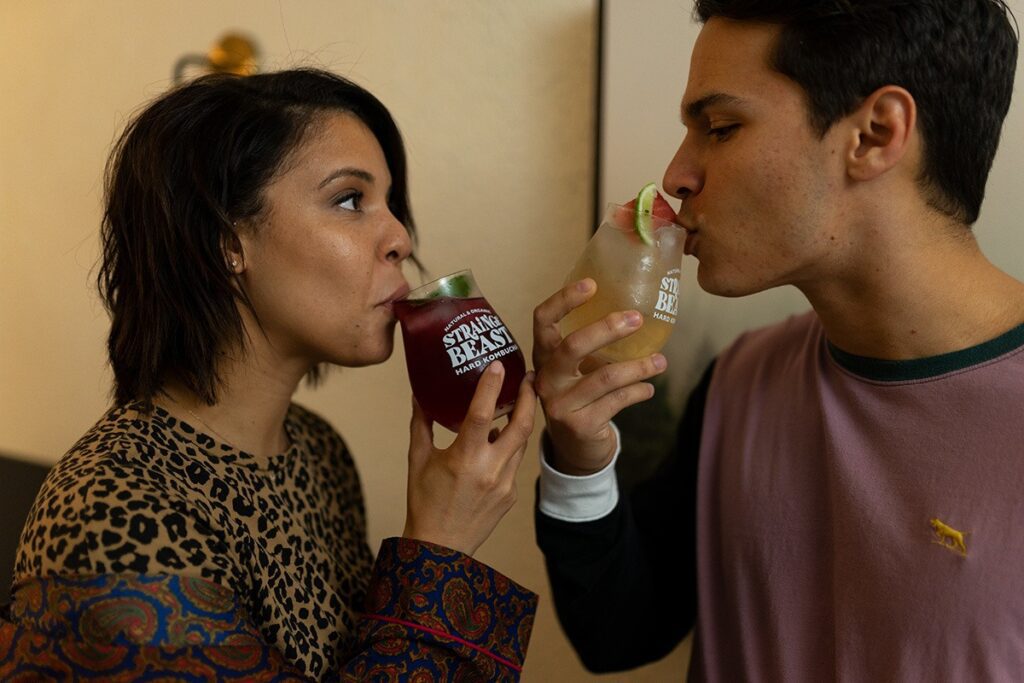
The final boozy product
At last, you’re toasting your new creation with friends. You can expect that signature fizz and refreshing tang of kombucha, while the standout flavors totally depend on what you dreamed up and dropped in along the way.
And like us, you probably discovered that hard kombucha is indeed a Strainge Beast. That’s what we love about it, and if you want to leave the fermentation frenzy to us, we got you! Use our kombucha finder to make the shortest trip to your next six-pack.
